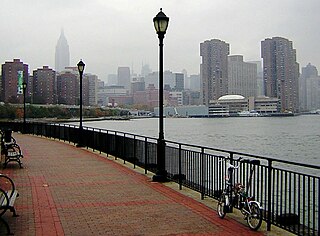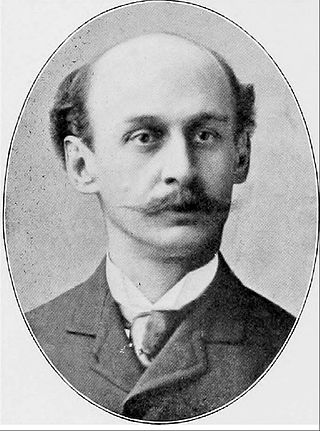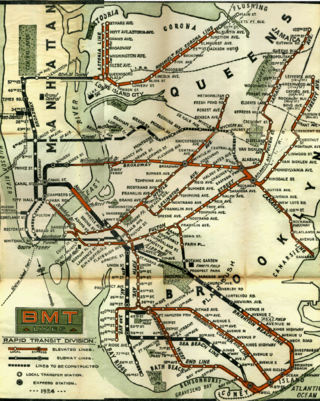
Koreatown, or K-Town, is an ethnic Korean enclave in Midtown Manhattan, New York City, centered on 32nd Street between Madison Avenue and the intersection with Sixth Avenue and Broadway, which is known as Greeley Square. The neighborhood in Midtown South features over 150 businesses of various types and sizes, ranging from small restaurants and beauty salons to large branches of Korean banking conglomerates. Koreatown, Manhattan, has become described as the "Korean Times Square" and has emerged as the international economic outpost for the Korean chaebol.

Gettysburg National Cemetery is a United States national cemetery in Gettysburg, Pennsylvania created for Union casualties from the Battle of Gettysburg in the American Civil War. The Battle of Gettysburg, which was fought between July 1 to 3, 1863, resulted in the largest number of casualties of any Civil War battle but also was considered the war's turning point, leading ultimately to the Union victory.
The Twilight Club was a dinner club in New York City that operated from 1883 until 1904. It was founded by Charles F. Wingate "to cultivate good fellowship and enjoy rational recreation."

Midtown Manhattan is the central portion of the New York City borough of Manhattan and serves as the city's primary central business district. Midtown is home to some of the city's most prominent buildings, including the Empire State Building, the Chrysler Building, the Hudson Yards Redevelopment Project, the headquarters of the United Nations, Grand Central Terminal, and Rockefeller Center, as well as several prominent tourist destinations including Broadway, Times Square, and Koreatown. Penn Station in Midtown Manhattan is the busiest transportation hub in the Western Hemisphere.

Fifth Avenue is a major and prominent thoroughfare in the borough of Manhattan in New York City, New York, United States. It stretches north from Washington Square Park in Greenwich Village to West 143rd Street in Harlem. It is one of the most expensive shopping streets in the world.

The New York Athletic Club is a private social club and athletic club in New York state. Founded in 1868, the club has approximately 8,600 members and two facilities: the City House, located at 180 Central Park South in Manhattan, and Travers Island, located in Westchester County. Membership in the club is by invitation only.

Kips Bay, or Kip's Bay, is a neighborhood on the east side of the New York City borough of Manhattan. It is roughly bounded by East 34th Street to the north, the East River to the east, East 27th and/or 23rd Streets to the south, and Third Avenue to the west.

Henry Janeway Hardenbergh FAIA was an American architect, best known for his hotels and apartment buildings, and as a "master of a new building form — the skyscraper."

Sixth Avenue – also known as Avenue of the Americas, although this name is seldom used by New Yorkers – is a major thoroughfare in New York City's borough of Manhattan, on which traffic runs northbound, or "uptown". It is commercial for much of its length.

The BMT Lexington Avenue Line was the first standard elevated railway in Brooklyn, New York, operated in its later days by the Brooklyn Rapid Transit Company, the Brooklyn–Manhattan Transit Corporation, and then the City of New York.

The Racquet and Tennis Club, familiarly known as the R&T, is a private social and athletic club at 370 Park Avenue, between East 52nd and 53rd Streets in Midtown Manhattan, New York City.

Axa Equitable Center is an office skyscraper at 787 Seventh Avenue, between 51st and 52nd Streets, in the Midtown Manhattan neighborhood of New York City. Completed in 1986 and designed by Edward Larrabee Barnes, the building measures 752 feet (229 m) tall with 54 stories. Equitable Center West was developed by the Equitable Life Assurance Society adjacent to Equitable's existing skyscraper at 1285 Avenue of the Americas.

The Fifth Avenue/53rd Street station is a station on the IND Queens Boulevard Line of the New York City Subway. Located at the intersection of Fifth Avenue and 53rd Street in Manhattan, it is served by the E train at all times and the M train weekdays except late nights.

The M5 and M55 bus routes constitute a public transit corridor in Manhattan, New York City, running along the Fifth / Sixth Avenues / Riverside Drive Line as well as the southern portion of the Broadway Line after the discontinuation of the M6. The routes primarily run along Broadway, Fifth and Sixth Avenues, and Riverside Drive from South Ferry, Lower Manhattan to Washington Heights. The M5 covers the northern portion of the route north of 31st Street, while the M55 operates along the southern portion of the route south of 44th Street. The two routes overlap in Midtown Manhattan. The portion along Broadway south of East 8th Street was originally a streetcar line.

Andrew Freedman was an American businessman who is primarily remembered as the owner of the New York Giants professional baseball team of the National League from 1895 to 1902. He also briefly owned the Baltimore Orioles of the American League in 1902; the franchise would later relocate, and became the New York Yankees. Freedman was also a director of various companies, including the Interborough Rapid Transit Company and the Wright Company. He was born and died in New York City.

The USA Track & Field Outdoor Championships is an annual track and field competition organized by USA Track & Field, which serves as the American national championships for the sport. Since the year 1992, in the years which feature a Summer Olympics, World Athletics Championships, Pan American Games, NACAC Championships, or an IAAF Continental Cup, the championships serve as a way of selecting the best athletes for those competitions.

6½ Avenue is a north-south pedestrian passageway in Midtown Manhattan, New York City, running from West 51st to West 57th Streets between Sixth and Seventh Avenues.

Elliott Fitch Shepard was a New York lawyer, banker, and owner of the Mail and Express newspaper, as well as a founder and president of the New York State Bar Association. Shepard was married to Margaret Louisa Vanderbilt, who was the granddaughter of philanthropist, business magnate, and family patriarch Cornelius Vanderbilt. Shepard's Briarcliff Manor residence Woodlea and the Scarborough Presbyterian Church, which he founded nearby, are contributing properties to the Scarborough Historic District.
Harry Allan Jacobs (1872–1932) was an American architect from New York City. He designed the hotel building at 22 East 29th Street, now the James New York - NoMad, a New York City Landmark. He also designed Hotel Marseilles (1905), a New York City Landmark, and the wings added to 1125 Grand Concourse.

National Association of Amateur Athletes of America (NAAA) (1879 to 1888) was formed in 1879. This was the organized body for the Amateur Athletes before the Amateur Athletic Union (AAU) took over in 1888.

















